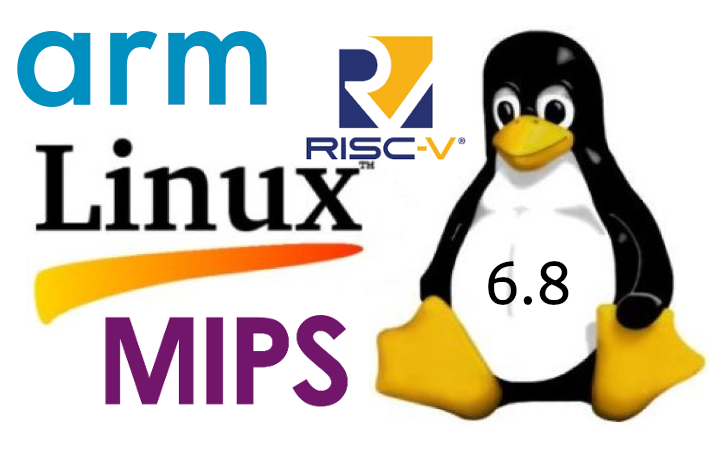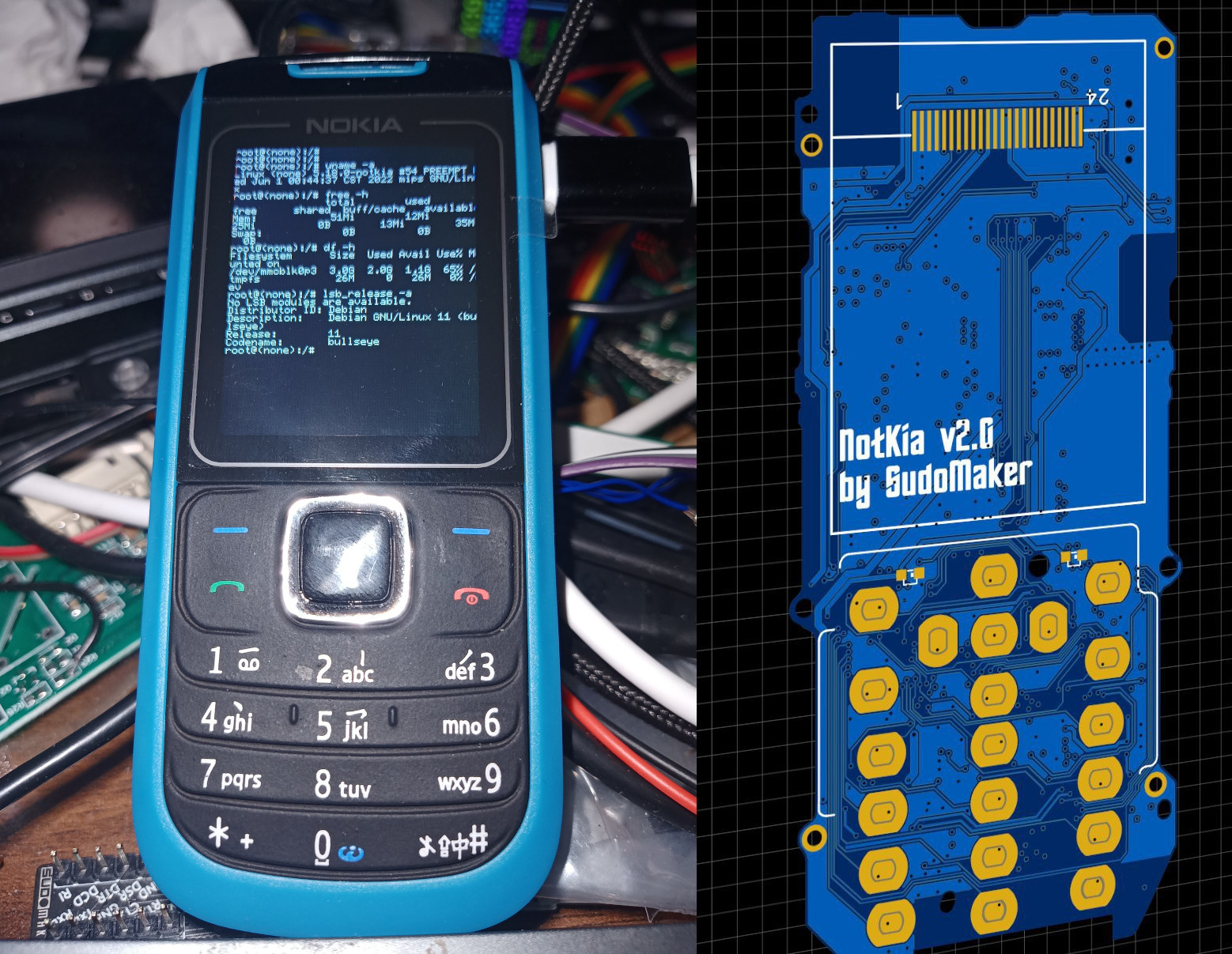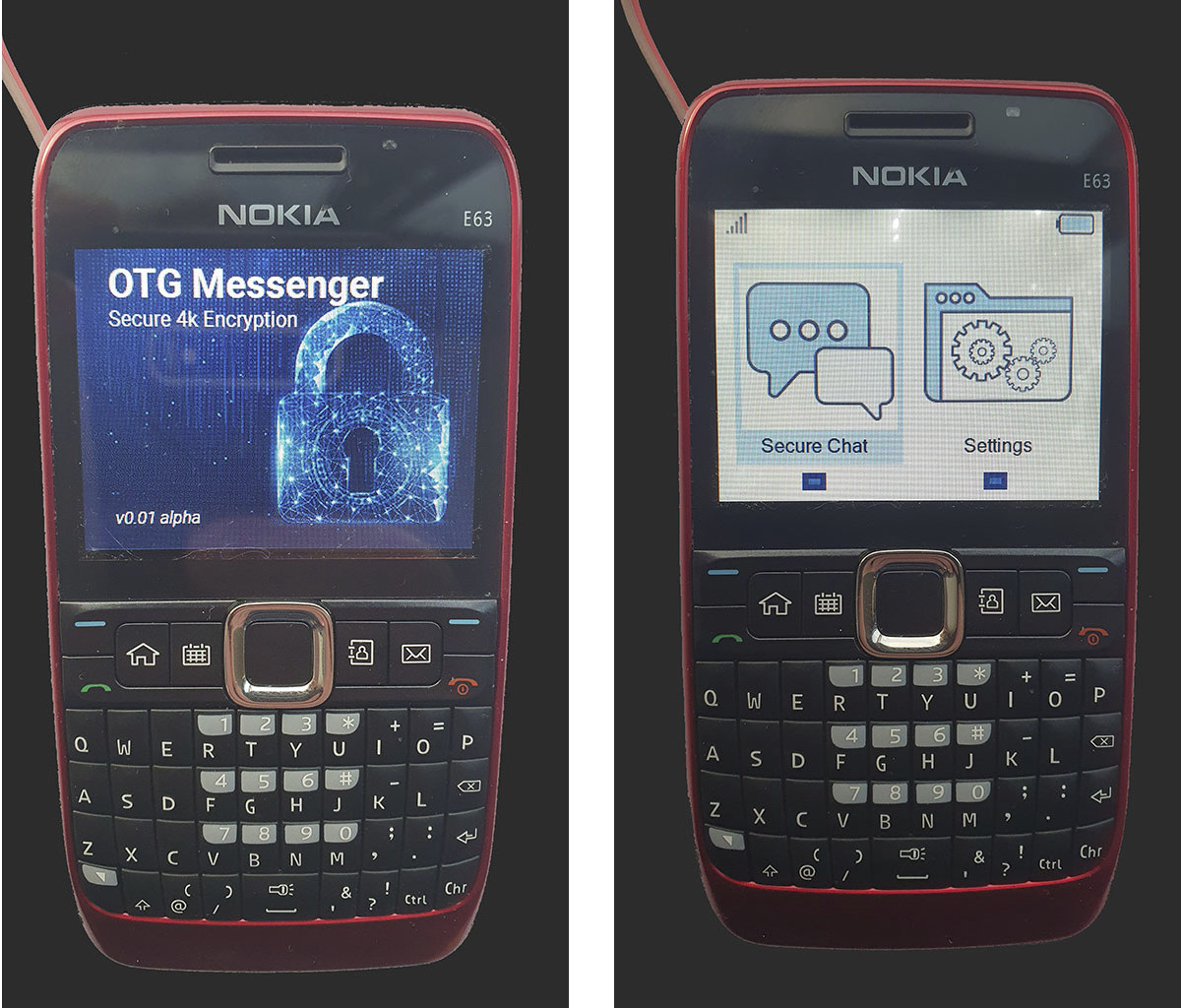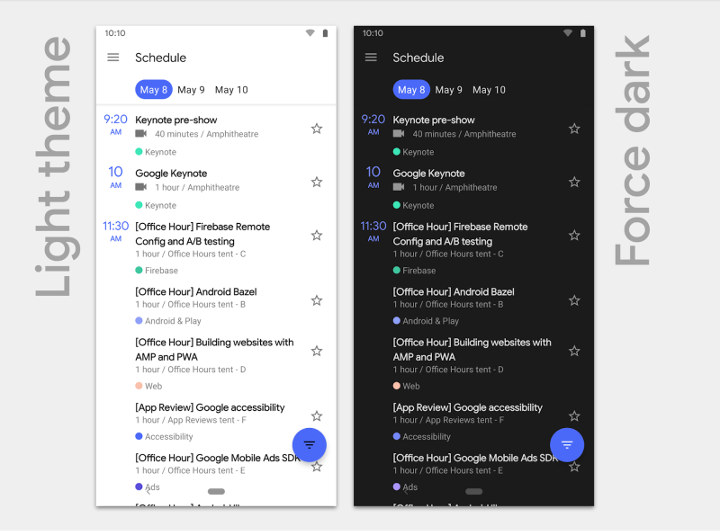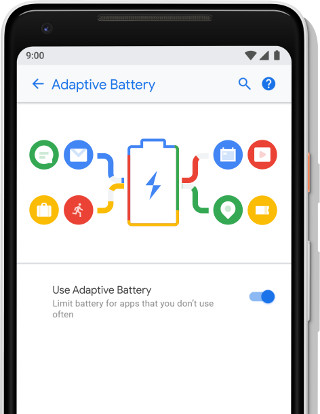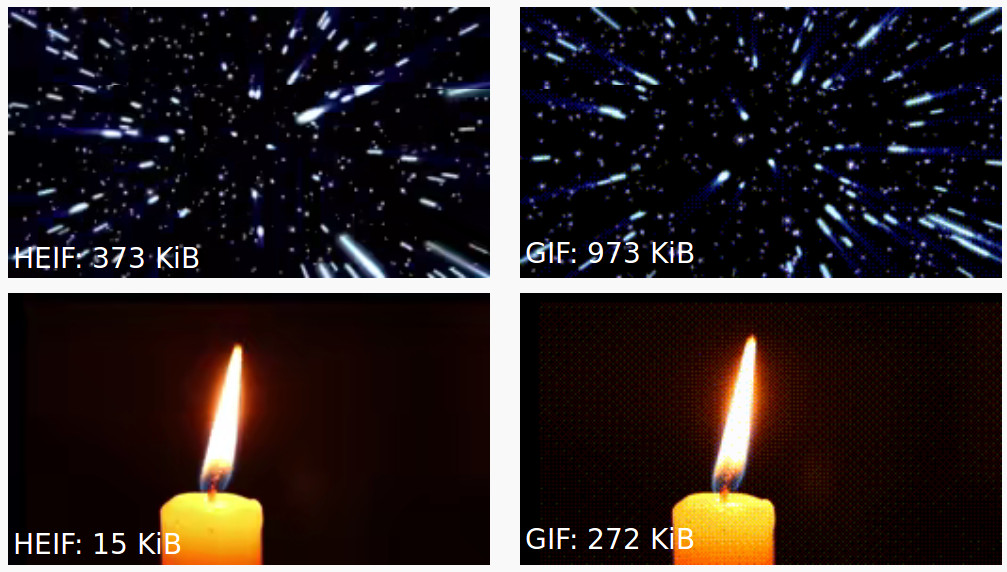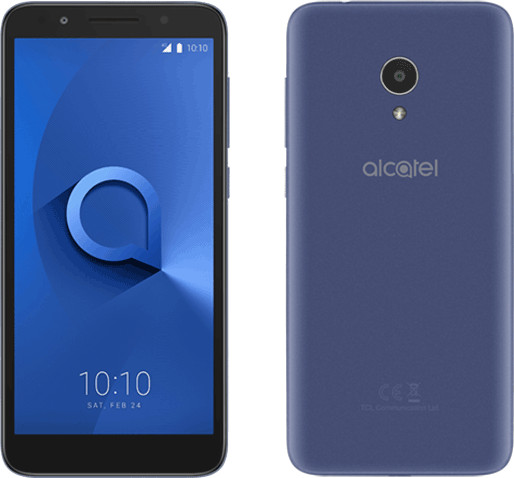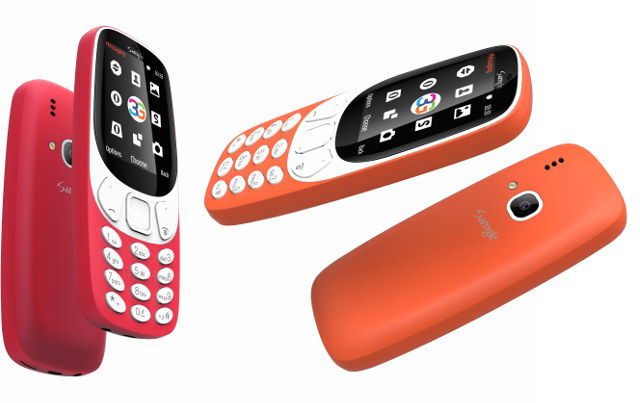Linus Torvalds has just announced the release of Linux 6.8 on the Linux kernel mailing list: So it took a bit longer for the commit counts to come down this release than I tend to prefer, but a lot of that seemed to be about various selftest updates (networking in particular) rather than any actual real sign of problems. And the last two weeks have been pretty quiet, so I feel there’s no real reason to delay 6.8. We always have some straggling work, and we’ll end up having some of it pushed to stable rather than hold up the new code. Nothing worrisome enough to keep the regular release schedule from happening. As usual, the shortlog below is just for the last week since rc7, the overall changes in 6.8 are obviously much much bigger. This is not the historically big release that 6.7 was – we seem to […]
Nokia 1680 phone gets new PCB with MIPS SoC, runs mainline Linux
Reimu NotMoe has designed the “Notkia” PCB based on Ingenic X1000E MIPS processor with 64MB built-in RAM and following the exact same dimensions as the PCB found in Nokia 168x phones (1680, 1681, 1682), and allowing the phone to run mainline Linux. The board also comes with 32MB NOR flash, a 4GB SLC NAND flash, and supports LoRa, 2.4 GHz WiFi, Bluetooth, and GNSS connectivity, but no cellular modem. Combining Nokia 168x phone with Notkia PCBA creates a phone with the following specifications: SoC – Ingenic X1000E single-core XBurst MIPS processor @ 1.0 GHz (2200+ CoreMark) with 64MB RAM Storage – 32MB NOR flash + 4GB SLC NAND flash Display – 2.0-inch 240×320 IPS LCD, 3/4 visible (Replaces the original 128×160 TFT screen in the phone) Camera – 5MP camera with auto focus (only available in the Nokia 1680 case) Audio – Yamaha MA-3 (YMU762) music synthesizer and regular I2S […]
Nokia E63 phone converted into LoRa messenger for secure, off-the-grid communication
While LoRa radios are mostly designed to transmit data from sensors and to actuators, there have been attempts to leverage LoRa for messaging in the past with, for instance, the Meshtastic Mesh Networking Project to help hikers exchanged their GPS coordinates or other short messages, the Raspberry Pi Pico powered PICOmputer with QWERTY keyboard, display, and a LoRa module, and Pine64 is also working on developing LoRa hardware for messaging. Trevor Attema decided to repurpose his Nokia E63 Blackberry-like phone with a custom STM32H7 board with a LoRa radio while keeping the enclosure, display, backlighting, keyboard, and speaker which he calls the Off The Grid Messenger, or OTG Messenger for shorts. The custom board also adds Microchip ATECC608 crypto authentication chip for encrypted messages, and the LoRa Messenger would allow a theoretical transmission range of 16 kilometers in line of sight which would allow a small group of people to […]
Android 10 Beta 3 Now Available on 15 OEM Phones
Google introduced Android Q in March with the first beta and preview SDK release. The new version of Android introduced more privacy protections, support for foldables, sharing shortcuts, connectivity improvements (e.g. WPA3 security), new camera and multimedia features such as dynamic depth photos and AV1 media codec support, as well as an updated neural network API, higher ART performance, and security improvements. Google has now announced Android 10 Beta 3 with a few new features over the first preview release, and support for 15 OEM phones on top of the 6 Pixel phones already supported. Some of the new improvements in Android 10 Beta 3 include: Scoped Storage feature giving users control over files and preventing apps from accessing sensitive user or app data. See the corresponding developer page for details. Update of BiometricPrompt authentication framework to support biometrics, e.g. face recognition, at a system level. Project Mainline described as […]
Android P Beta Released. What’s New?
Last March, Google released Android P developer preview with new features such as indoor positioning with WiFi RTT, support for display notch, HDR VP9, HEIF image compression, a new API to access two or more camera simultaneously and so on. Google I/O 2018 has just gotten started, and the company announced the release of Android P beta with yet more features, and support for phones from more manufacturers. Some of the most notable features include: Adaptive Battery uses machine learning to prioritize access to system resources for a user’s most commonly run apps, and places each app in four “buckets” ranked from “active” to “rare”. Apps will change buckets over time, and apps not in the “active” bucket will have restrictions for jobs, alarms, network and high-priority Firebase Cloud Messages. App Actions will also use machine learning to show actions for specific apps depending on context. For example highlighting “Taylor Swift” […]
HEIF Image Container Format Leverages H.265/HEVC to Store Photos and Image Sequences
A few years ago, Google introduced WebP image format leveraging VP8 video codec, and the Moving Picture Experts Group (MPEG) has decided to do something similar but instead of using VP8, they went with their own H.265/HEVC video codec for HEIF image container format. HEIF stands for High Efficiency Image File, and is defined by ISO/IEC 23008-12 (MPEG-H Part 12). The storage of the data is based on ISO Base Media File Format (ISOBMFF), and HEIF appears to be especially useful to replace animated GIFs file with better quality and much lower sizes, as well as burst photos. HEIF also appears to compress a little better than JPEG photo with similar quality, but HEIF appears to fallback to JPEG codec sometimes, so it may be improvement in the way metadata is handled? The comparison table show the different features between HEIF and other well-known image format (JEG, WebP, GIF, etc…). […]
Android Go Smartphones Launches – Alcatel 1X, Nokia 1, ZTE Tempo Go, and More Expected
Google released Android 8.1 Go Edition at the end of last year for low-end devices with 512MB to 1GB RAM, but so far no products had been launched with the new optimized operating systems. Hiroshi Lockheimer, Senior Vice President, Platforms & Ecosystems at Google, wrote a few days ago that Android Go phones were to be announced at Mobile World Congress 2018 for as low as $50. I’ve not seen any models for $50 yet, but several Android Go smartphones have already been announced right before the event. We’ll have a quick look at some of models announced so far. Alcatel 1X The phone is equipped with Mediatek MT6580 quad-core Cortex A53 processor @ 1.3 GHz, 1GB RAM, 16GB storage, a 5.3″ 960×480 display, rear and front-facing cameras, and a 2,460 battery. Alcatel 1X will support 2G, 3G and 4G networks, and come with single or dual SIM slots. The […]
$57 Samgle 3G 3310 3G Feature Phone Looks like Nokia 3310
Let’s say you have a product, and need to create a brand or company name… Just think about two world famous brands or companies such as Samsung and Google, and with clever string manipulation come up with your own original brand: Samgle! Now you need a product name… Find a product from a third brand that’s similar to yours, for example Nokia 3310 3G phone, and you’ve got all your names sorted! Meet Samgle 3G 3310 feature phone with 2G and 3G connectivity. Samgle 3G 3310 specifications: SoC – TBD System Memory – 64MB RAM Storage – 128MB flash, micro SD slot up to 32GB (or is it 64GB?) Display – 2.4″ curved 320×240 display Camera – 2.0M rear camera Cellular connectivity 2G GSM – 850/600/1800/1900 MHz 3G WCDMA – 900/2100 MHz SIM Card Type – SIM + SIM/micro SD card; Dual SIM dual standby Other Wireless Connectivity – Bluetooth […]


